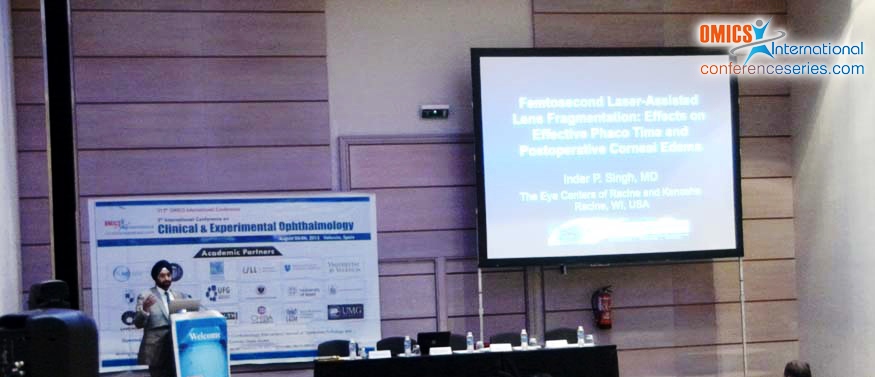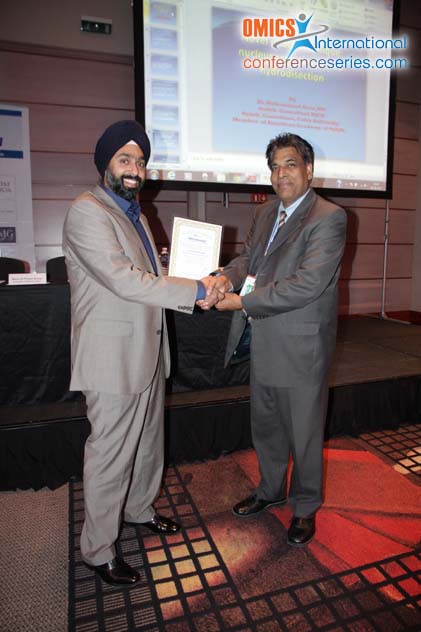
Inder Paul Singh
Eye Centers of Racine & Kanosha in Racine
USA
Title: Vitreous floaters- An under-appreciated and under treated problem: Patient satisfaction and complications of YAG vitreolysis
Biography
Biography: Inder Paul Singh
Abstract
Purpose: To assess the impact of yttrium aluminium garnet (YAG) vitreolysis for removal of floaters on patient’s satisfaction and to determine rate of complications with this procedure. Methods: This retrospective, observational study included 326 eyes of n=218 patients (mean age, 66 years [range, 38 to 89 years]) who underwent YAG vitreolysis with the Ultra Q Reflex™ (Ellex Medical Lasers, Adelaide, Australia), a neodymium-doped (Nd) YAG laser in an office outpatient setting. [Power range 2.0 mj-7.0mj] A 21 mm lens with hypromellose ophthalmic demulcent solution was placed on the cornea to help visualize the vitreous floaters. Laser was then fired once adequate visualization was achieved. Patient satisfaction was assessed with a 1-10 self-rated scale with higher values indicating greater patient satisfaction as well as a “Yes” or “No” indicating whether they were satisfied with improvement in daily functioning. Information on complications was recorded for all patients. Results: A total of 93% of patients answered “yes” when asked if they were satisfied with their post laser improvement in daily functioning. Average degree of improvement from the subjective questionnaire was 8.3/10. Best results were seen with solitary Weiss rings verses amorphous “clouds”. Average number of sessions per eye is 1.4. Average number of shots: 302-more seen with amorphous floaters. Average power setting used: 4.0 mJ. Conclusions: We observed two cases of intraocular pressure spikes requiring IOP lowering meds. Two phakic lenses were damaged, one of which required cataract surgery. No retinal detachment or other retinal complications were seen and there was no anterior chamber or vitreous reaction. No haemorrhages were observed.


